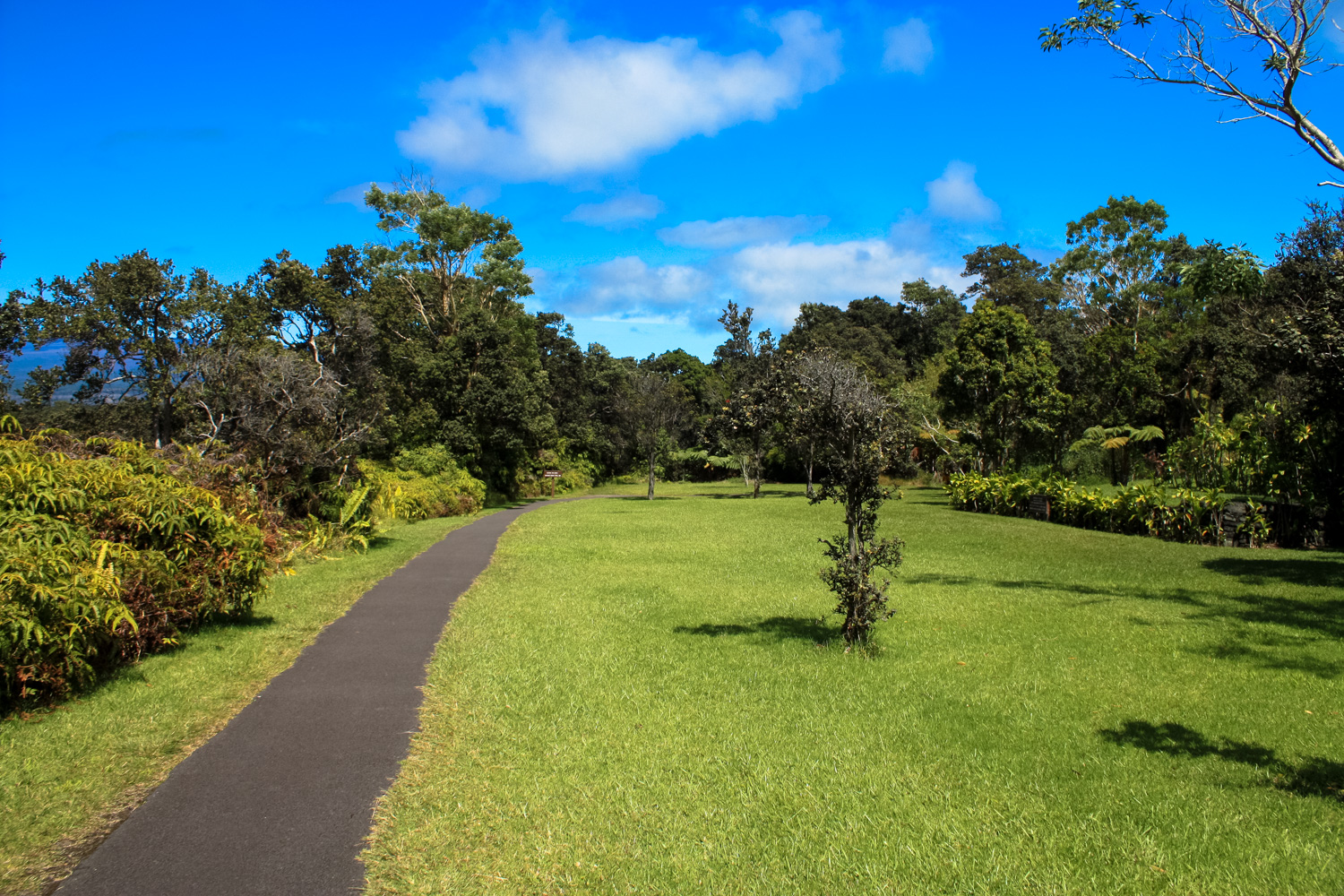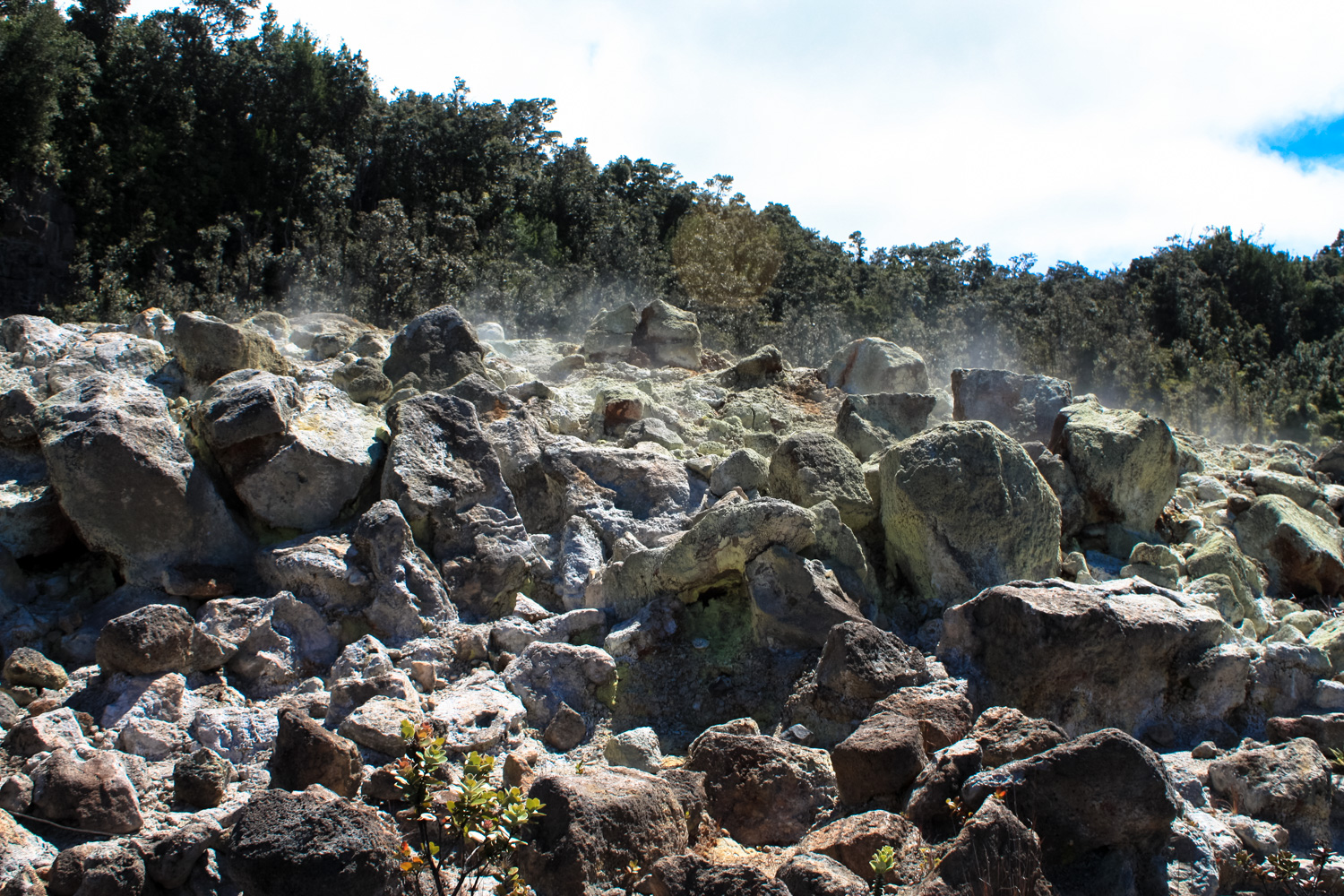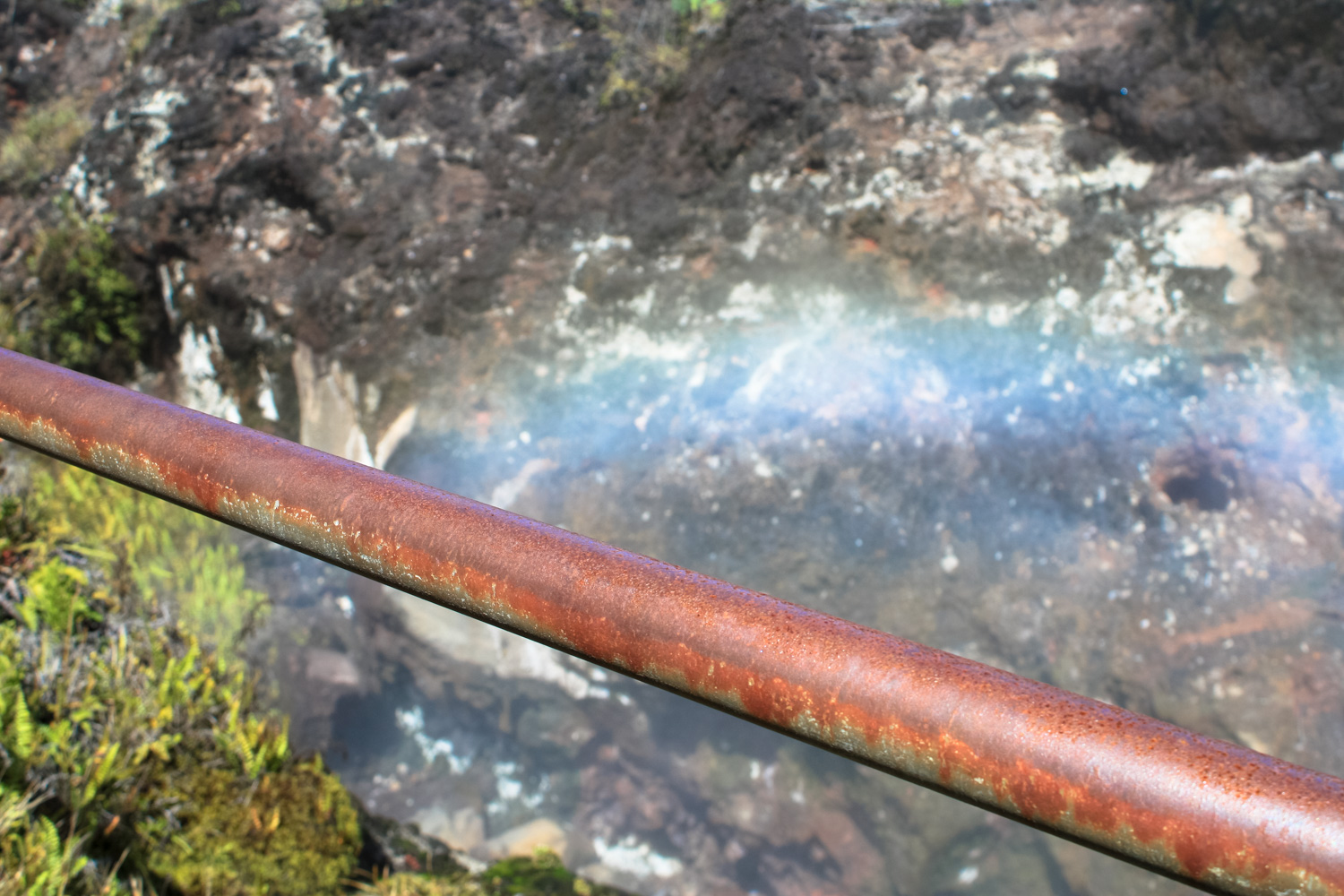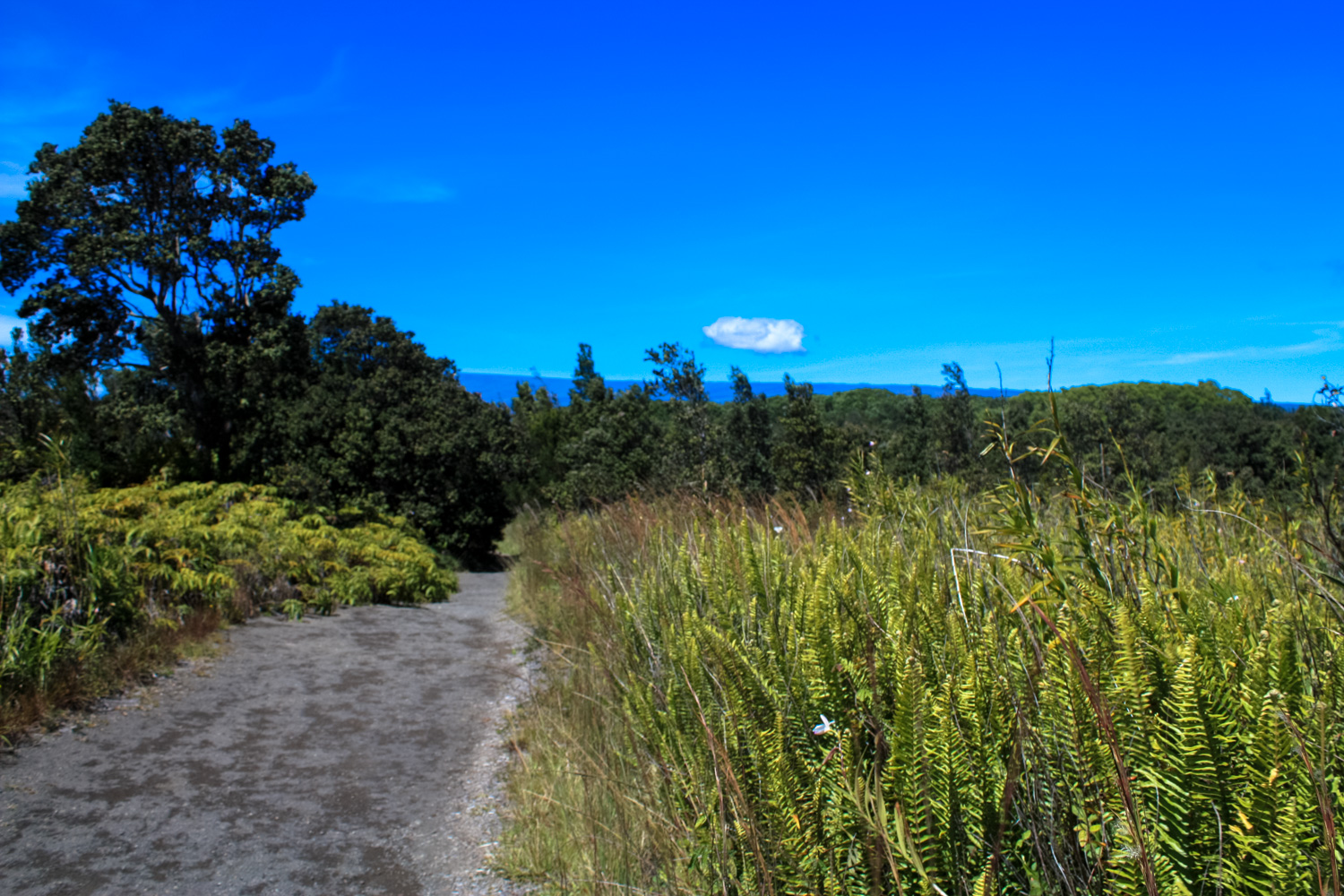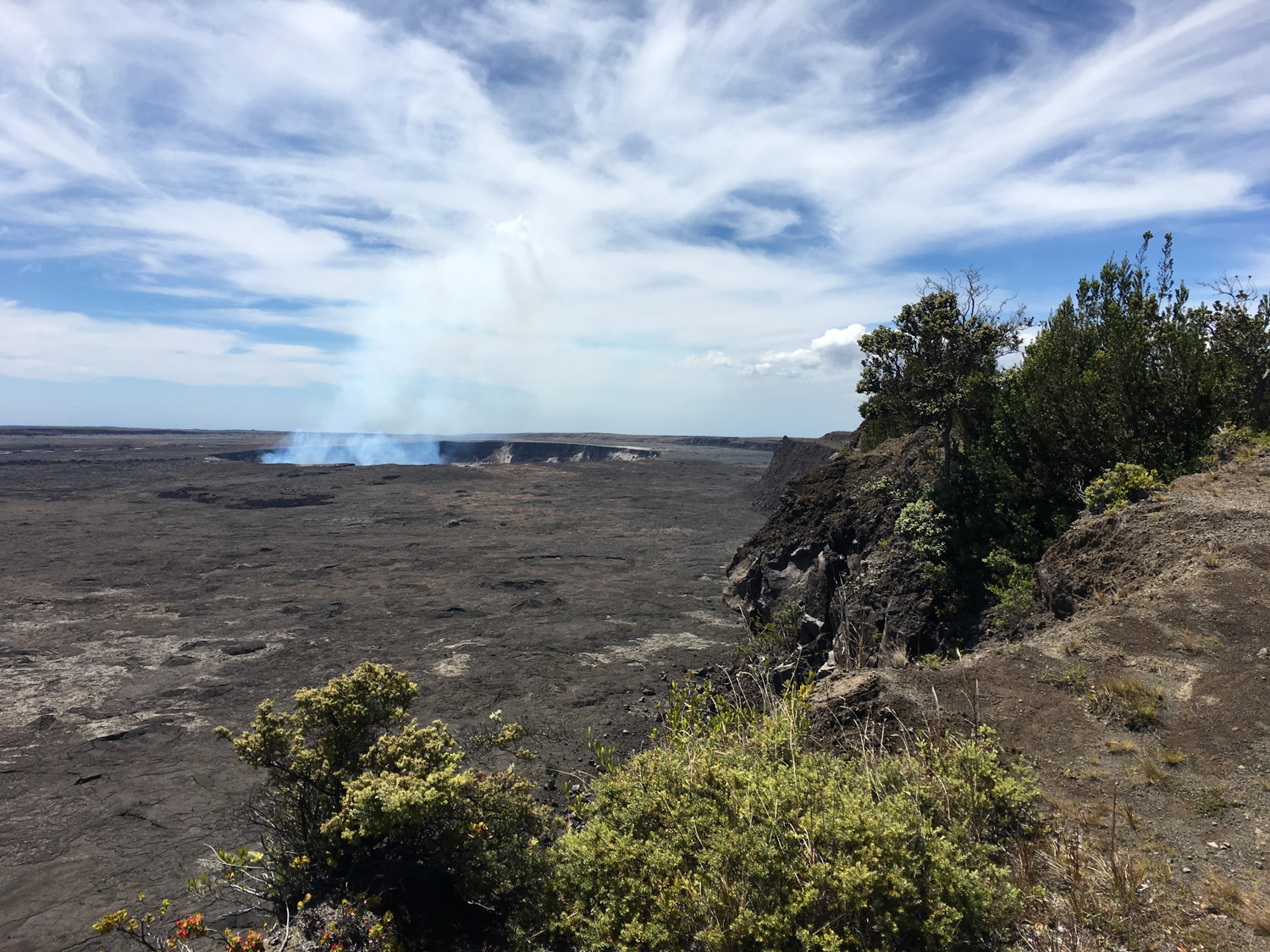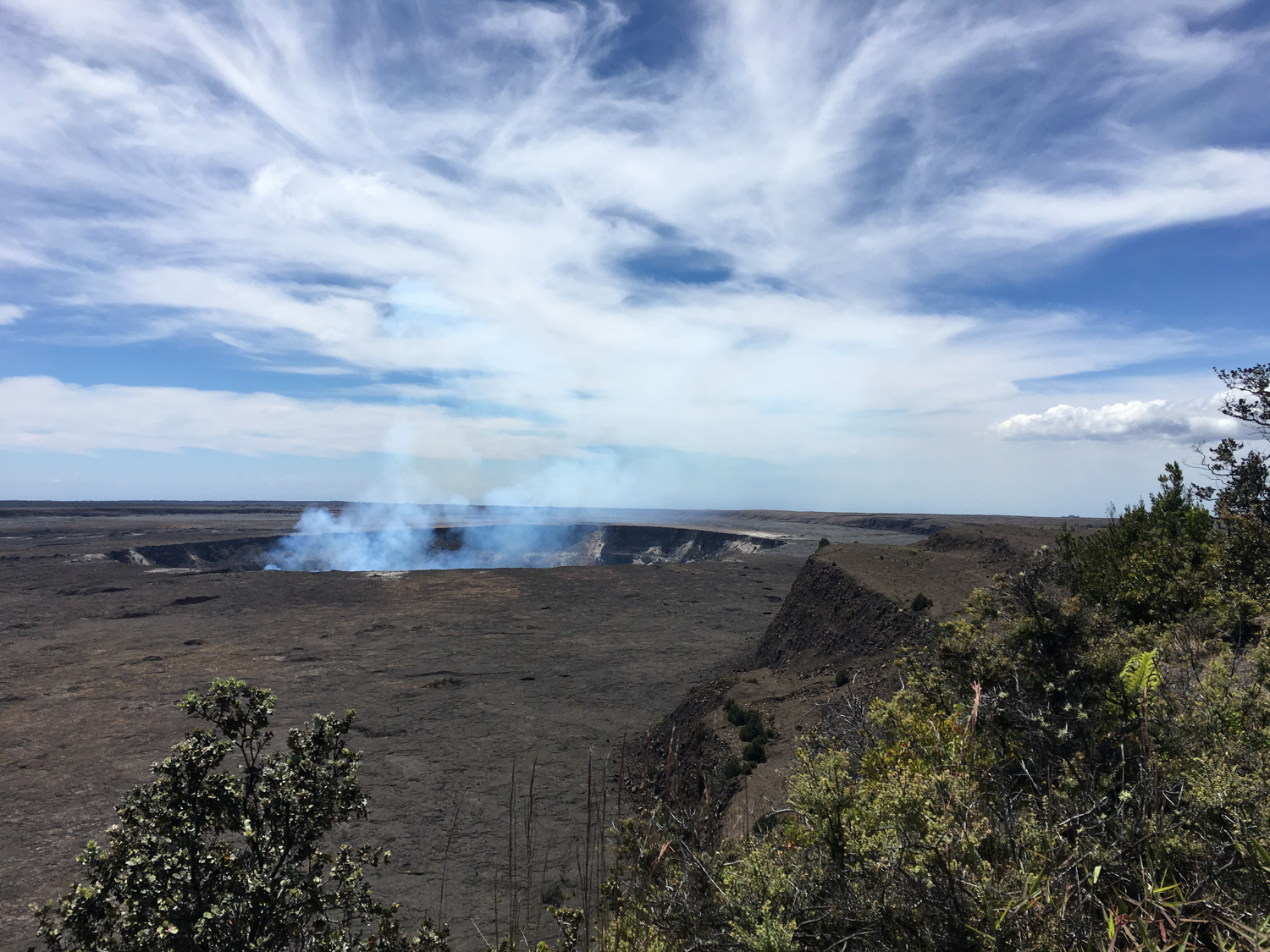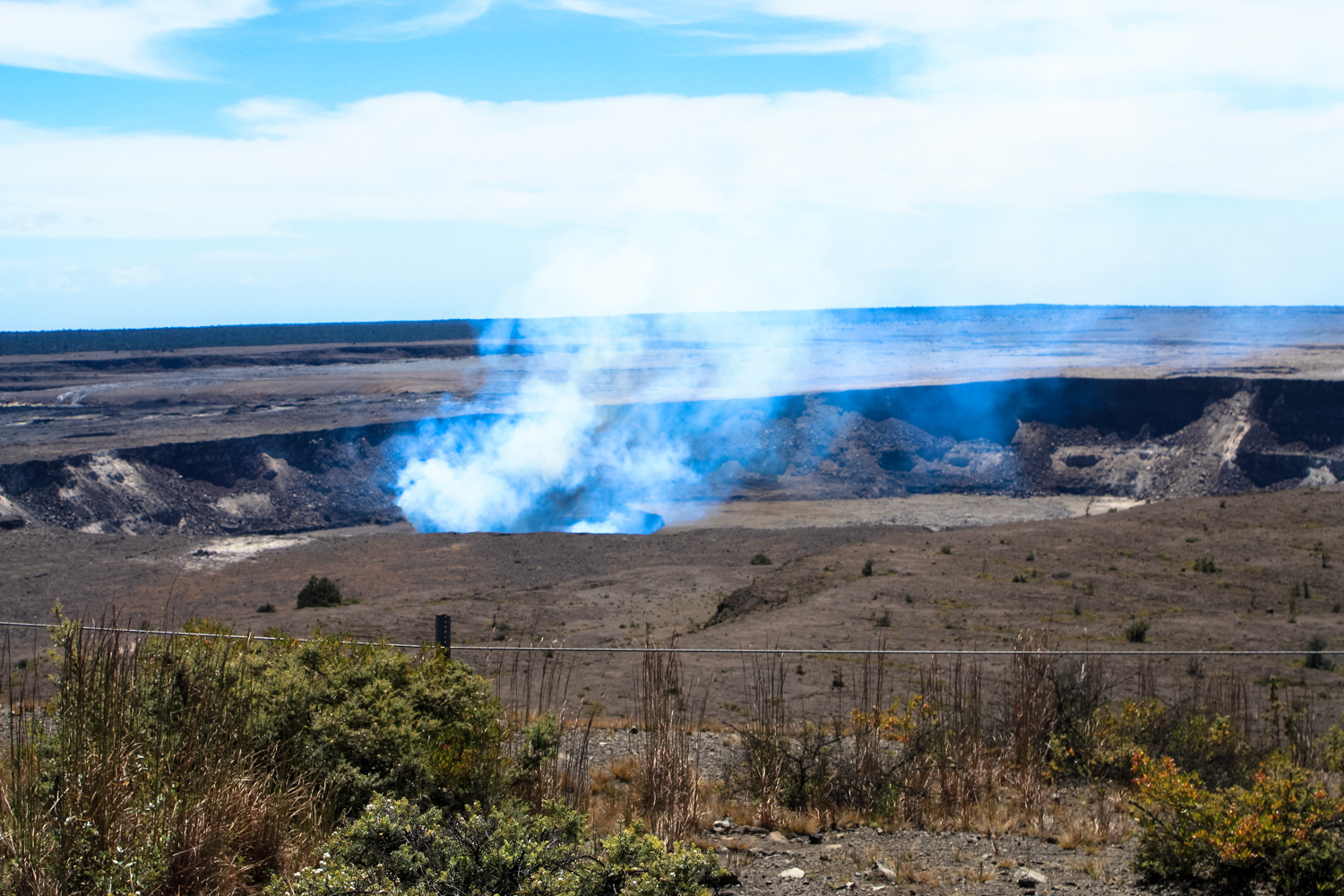Hike on an easy but lightly-traveled path from the main visitor center at Hawai’i Volcanoes National Park through fascinating geologic features like steam vents and sulphurous badlands along the rim of the Kilauea Caldera to the world-famous Jagger Museum. This is about as close to the volcanic action of Kilauea as you can get without a silver heat suit and some serious volcanology education.
Despite the fact that this trail literally travels between two of the most popular locations within Hawai’i Volcanoes National Park — the Kilauea Visitor Center and Jagger Museum — there is a very good chance you’ll have long stretches of this trail all to yourself. The reason? The paved Crater Rim Drive is very close by and provides faster-than-foot transportation between the two points.
But you’re a hiker, so you already know that driving isn’t the best way to really get to know a landscape — and this route on the Sulphur Banks and Crater Rim Trails really lets you get up close and personal with this unbelievable place in a way that you’ll never get snapping photos from a car.
This route begins at the Visitor Center, which is an excellent place to stop no matter what trails you’re looking to hike in the park. Here, you’ll find the most up to date information on the volcanic activity (really, a MUST do), weather forecasts, and a surprisingly large variety of guided activities throughout the park:

Once you’ve satisfied your planning urges and gotten your bearings for the park, head outside and start walking west along Crater Rim Drive. Posted signs marking the Sulphur Banks Trail should become visible near a large grassy lawn area.

Just to the right of this path is a Kahua Hula (dance platform) that is reserved for traditional Hawai’ian dances and chants. In addition to being a stunning geologic park, Hawai’i Volcanoes National Park is also tasked with preserving, maintaining, and sharing the rich culture of the native Hawai’ians. In the Hawai’ian tradition, the fire goddess Pele — creator of all the Hawai’ian Islands — lives within the Halema’uma’u Crater within the Kīlauea Caldera. It is important to remember while visiting this park that it is also a very holy place and there may be active spiritual ceremonies taking place. Please treat the land and the people with the appropriate respect.
By about the 0.2 mile mark, you’ll leave the manicured lawns and walk into the Sulphur Banks. But first, you’ll note one of the park’s excellent warning signs:

This section of the hike walks along partial boardwalks and some single track trail through the region known as the Sulphur Banks (this portion of the route is accessible for most mobility devices). You’ll note that this odd, barren, steaming area is surrounded by dense rainforest. The area near the sulphur vents used to be as densely forested as the surrounding areas, but the frequent geologic activities underground changed the soil makeup.
Underneath your feet, volcanic gasses mix with underground water supplies and shoot the carbon dioxide, sulphur dioxide, and hydrogen sulfide back up to the surface via these vents.


If you look closely, you’ll note that some vents have delicate yellow sulphur crystals near the surface. Elsewhere, you’ll notice red and brown-stained clay from the iron oxide. Not visible (but definitely noticeable) are the sulphuric gasses that break the hard lava down into the softer clay. It goes without saying (but we’ll say it anyway) that you probably don’t want to breathe too much of this stuff in, especially if you have any breathing or lung conditions.

the top of a metal guard rail is heavily eroded from the gasses escaping from a nearby vent
At 0.7 mile, the trail crosses Crater Rim Drive and heads toward the Steaming Bluff and the edge of the Kilauea Caldera. Keep right at the junction with the ‘Iliahi Trail to join the Crater Rim Trail heading toward the Jaggar Museum.
Oh, and don’t forget to soak in the absolutely stunning views of the Halema’umu’u Crater!

Hawai’i Volcanoes National Park is open 24 hours a day, and when the lava is really cooking in the Crater this is an incredible spot to watch the glow from afar.
Continue hiking west along the crater, diving into and out of the occasional patch of forest along the way.


The cliffs at the edge of the Steaming Bluff are notoriously unstable, so although you may want to get a close look at the caldera below, it is best appreciated from a safe distance from the edge.
From here, the Kilauea Caldera is a stunning sight — a huge and seemingly barren expanse of black rock that seems to have fallen from the ground you’re standing on, with an even further sunken molten pit just in sight off in the distance. The visitor brochure you can pick up at the entry gate or visitor center labels the years of all the different lava flows in the park, and it’s clear even with a cursory glance that this is a really, really active volcano.
The oldest exposed lava flows on Kīlauea date back more than 2,800 years, but geologists date the volcano at around 600,000 years old (still only the second-youngest volcano in the Hawai’ian hot spot). The volcano emerged from the sea around 100,000 years ago and has been busy since then. The current eruption began on January 3, 1983 and is both the longest eruption in Kilauea’s history and in 2010 it became the longest continuous eruption in the world.
Although most of the eruptions on Kīlauea are not of the explosive variety, there are plenty of relics of feistier behavior in its past. As you continue to hike past the Kīlauea Military Camp, you may notice some large boulders just kind of hanging out amidst the otherwise flat landscape.

Boulders like this one were shot out of the crater during eruptions and landed here.
Volcanoes!
From the military camp, it’s about another 1.4 miles to the Jaggar Museum and the Hawai’ian Volcano Observatory (not open to the public). The Jaggar Museum is generally open from 10AM to 8PM year-round (weather and volcanic activity permitting). Not only are there fantastic overlooks into the Crater itself, but the museum is stocked with scientific and historical artifacts as well as beautiful paintings telling the story of Pele — it’s well worth a visit. There are also restrooms and water fountains here – and if the lava lake is active this is the closest you’ll be able to get to seeing the action.
The Ka’u Desert Trail does continue for a short distance past the Museum, but all access around the Caldera is closed to the public due to safety hazards.
Tags: geology, halema'uma'u crater, Hawaii Volcanoes National Park, Island of Hawai'i, jaggar museum, kilauea caldera, volcano


